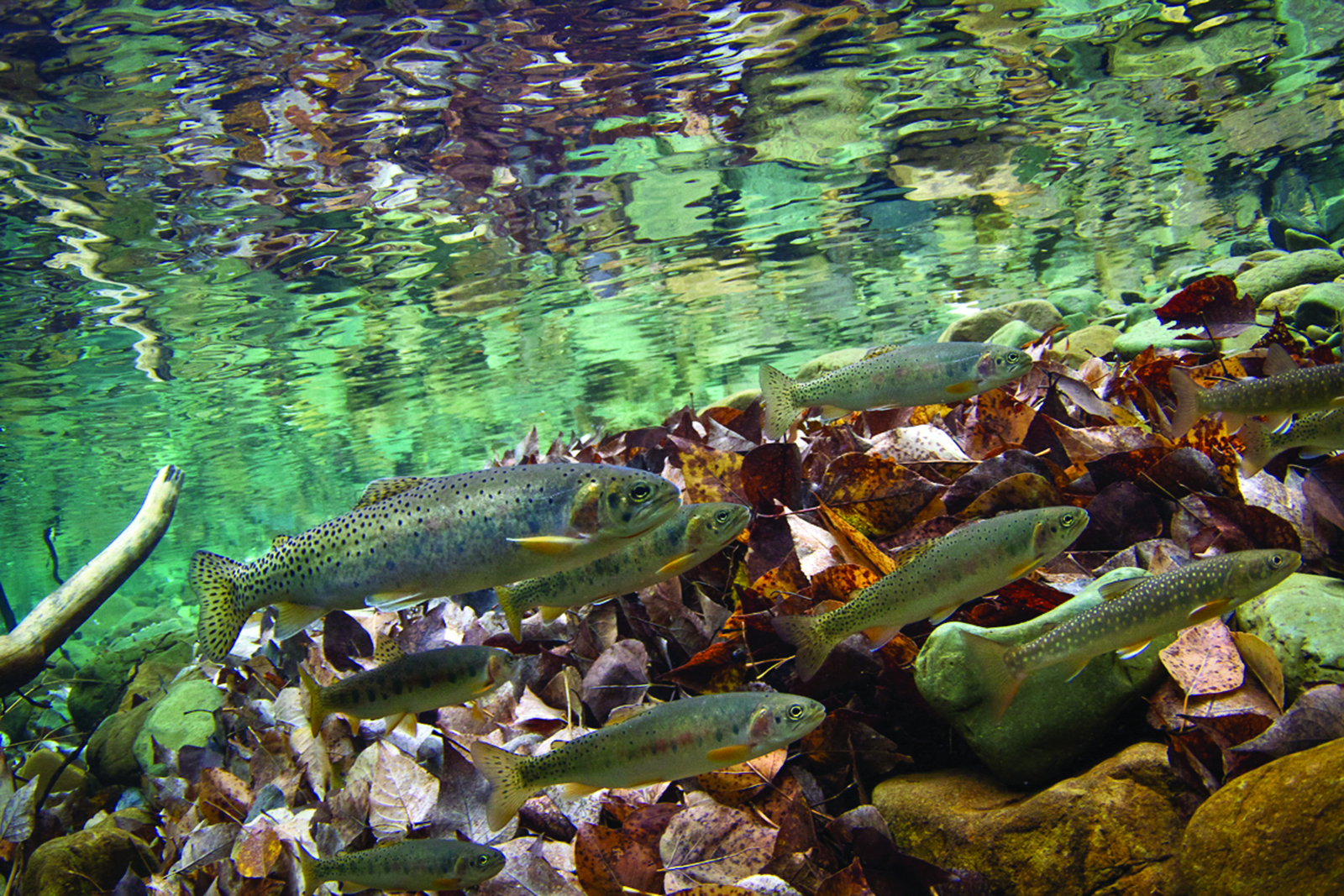As Trout Hybridization Persists, Wayfaring Fish Flourish in the Flathead
New research finds hybrid species are more prone to reproductive dispersal than their native counterparts, reducing biodiversity in one of the last best strongholds for westslope cutthroat
By Tristan Scott
The persistence of hybrid trout populations in the Flathead River Basin, where their range expansion continues despite possessing an inferior genetic framework, presents a piscatorial paradox that fish biologists have puzzled over for ages.
If hybridization between native and invasive species leads to diminished genetic diversity and reproductive fitness, how do hybrid trout spread so rapidly and with greater success than their native counterparts?
One theory — that hybrid trout, as a function of their mixed genetic ancestry, have a higher propensity toward reproductive dispersal than native fish, whose site fidelity compels them to return to their natal streams for spawning — has been speculated about but never empirically tested.
Until now.
In a new peer-reviewed study published in the scientific academic journal “Royal Society,” fish ecologists relied on historical migratory data from trout species in the upper Flathead River system to test their hypothesis, finding that “hybrid trout with predominantly nonnative rainbow trout ancestry were more likely to migrate as juveniles and to stray as adults.”
Overall, the study finds, “hybrids with greater than 50% rainbow trout ancestry were 5.7 times more likely to disperse than native or hybrid trout with small amounts of rainbow trout ancestry.”
“Our results show a genetic basis for increased dispersal in hybrids that is likely contributing to the rapid expansion of invasive hybridization between these species. Management actions that decrease the probability of hybrid dispersal may mitigate the harmful effects of invasive hybridization on native biodiversity,” according to the research paper titled, “High dispersal rates in hybrids drive expansion of maladaptive hybridization.”
Sam Bourret, the paper’s lead author, works as a fisheries ecologist at Montana Fish, Wildlife and Parks’ (FWP) Region 1 headquarters in Kalispell. He credits much of the study’s success to the availability of historic migratory data from species in the Flathead River system, as well as the use of passive integrated transponder (PIT) tags to assess dispersal. To sample “straying” adult fish, or those that reproduce in non-natal habitats, Bourret and his cohorts relied on the geochemical analysis of their otoliths, or ear stones, the calcium carbonate structures in the inner ear bones of fish that contain unique identifying tracers. The otoliths provide researchers with a history of a fish’s migration pathways, a kind of geochemical diary of its life.
Since dispersal is difficult to measure, those datasets proved key, Bourret said, demonstrating that trout with a higher percentage of hybridization on a gradient range were more prone to disperse and stray.
“Nonnative ancestry was strongly correlated with the propensity for adult fish to stray from natal spawning locations, particularly at high levels of introgression, which likely explains, at least in part, why nonnative ancestry rapidly increased over time despite the greatly reduced fitness of hybrid trout,” Bourret states in the paper. “These results suggest that dispersal is likely a primary mechanism contributing to the homogenization of genetic and biological diversity in native populations through invasive hybridization.”
The study is important, Bourret and his co-authors contend, because it could help inform new management actions that decrease the probability of hybrid dispersal and “mitigate the harmful effects of invasive hybridization on native biodiversity,” leading to more native fish on the landscape boasting drainage-specific adaptations that allow them to persist here.
“That’s the whole schtick with biodiversity,” according to Timothy Cline, an ecologist with the U.S. Geological Survey’s Northern Rocky Mountain Science Center in Glacier National Park, and a co-author on the research paper. “And that is why it’s so important that we keep discovering more and more about the diverse responses of fish species to the environmental stress they encounter throughout the system. It creates resilience. Sort of like the stocks in your investment portfolio, you want to spread them out so they don’t all crash at the same time.”
Indeed, westslope cutthroat trout have lived in post-glacial western Montana for thousands of years. During that time, the species has been able to survive catastrophic fires, massive floods and severe droughts, due in larger part to their drainage-specific genetic adaptations. And yet in the two centuries since Lewis and Clark first inscribed the species into the nation’s vernacular during their famed 1805 expedition—the trout’s scientific name is Oncorhynchus clarki lewisi — the cutthroat’s range has dwindled and genetically pure populations have come under siege. The population decline is due to stream siltation, dams, overfishing, and competition from — and hybridization with — introduced nonnative fish such as rainbow and brook trout, a phenomenon exacerbated by the warming world.
In Northwest Montana, fisheries managers have spent decades working to reverse the deleterious effects of legacy stocking of nonnative species to protect one of the last remaining strongholds of westslope cutthroat in the lower 48. Today, those efforts are beginning to show signs of success, despite a host of new challenges foisted on the native trout species by climate change and other human stressors.
But a new era of fisheries management has taken root, and efforts to re-establish and bolster genetically pure populations are gaining ground, while the potential for applications in other historic strongholds is bright. Massive, landscape-scale conservation efforts are in the works, including translocation of native species, drainage-specific stocking, eradication of invasive species, and rearing of genetically pure trout.
Working in concert, management agencies and researchers are developing a clearer understanding of the trout’s evolutionary history, overall genetic diversity, conservation challenges, and reproductive success.
“Ultimately, maintaining the viability of native species and genomes in human-mediated hybrid zones will require protecting nonhybridized populations while maintaining connections between critical habitats for life history and genetic diversity in a rapidly changing world,” the paper concludes.